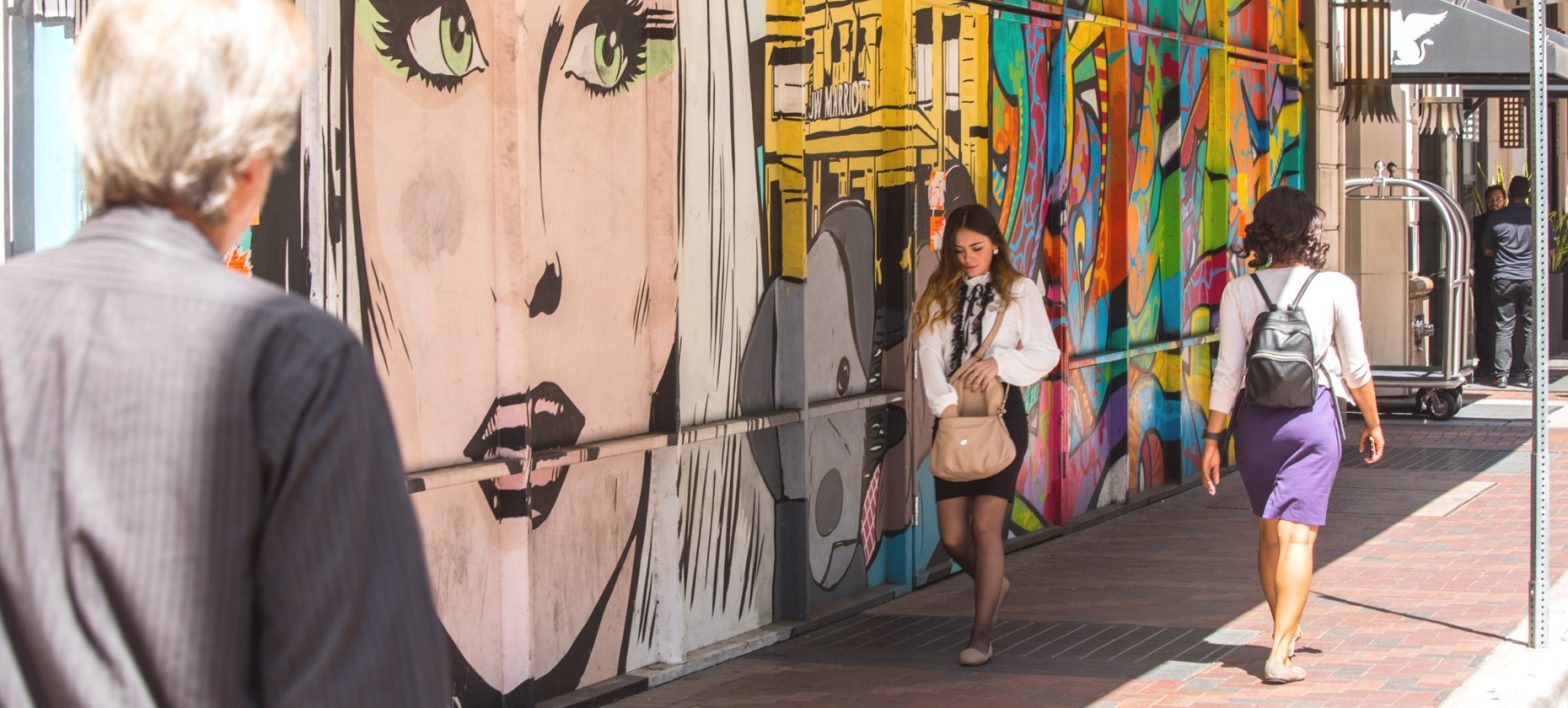Arts Employment in Houston
Houstonians employed in the arts can make decent wages, but employment rates and troubling disparities leave room for improvement
Opportunities for Houston creative professionals are strong, but racial and economic inequalities persist throughout the sector.
Why employment in the arts matters to Houston
Houston may be most recognized for its contributions in energy, technology and medicine, but our talented community of artists provides a valuable foundation for our region’s success. For example, it contributes more than $45.6 million per year in local tax revenues and $51.8 million in state taxes in Harris County. Further, our ability to attract, nurture and retain these talented individuals has serious implications for our regional economy as we continue the shift toward a knowledge-based economy.1 Despite this, only 30,000 Houston-area residents are employed in the arts, making up only 1.1% of total employment in the region.
The more we understand the factors affecting artistic employment in our region, the more we can do to strengthen and support this vital sector.*
*Due to data limitations, our analysis reflects the full nine-county Houston metro area, including Houston, The Woodlands and Sugarland. The only exception is information from the Arts Vibrancy Index, which specifically measures county-level figures.
The data
Artist occupations in the Houston area
Thanks to our relatively reasonable cost of living and vibrant communities, the Houston area is home to a wide range of working artists.
Consistent with national trends, designers make up the largest share of Houston artists by occupation, representing nearly one-third of our creative professionals.2 The “Other” category, which represents 18% of employed artists in Houston, consists of a variety of sports-related workers, entertainers and performers, announcers and more working for any of our six professional sports organizations and other entertainment institutions.
Art employment scores
The Arts and Culture Employees Score from the Arts Vibrancy Index, created by our partners at SMU DataArts, measures key indicators of artistic health in a region on a scale from 0 to 100. The Arts Vibrancy Index scores are akin to percentiles, meaning that if an area has a score of 52, it outperforms 52% of other similar areas (in this case, counties) on that measure.*
The Arts and Culture Employees Score provides more valuable context, measuring how Houston’s three main counties compare to other areas based on their numbers of salaried employees or independent contractors in museums, historical sites, theaters, dance, music, opera and other performing arts.
Harris County far-and-away leads the region in artistic employment, outperforming 73% of counties nationwide. While Fort Bend County does better when it comes to arts and cultural employment than 57% of the country, Montgomery County lags behind with a score of 39.
Race and employment in the arts
Since 1980, all three counties have been growing increasingly diverse. And while growing regional diversity can open the door for greater diversity in artistic expression, Houston’s multicultural sensibilities have not yet translated into more equitable artistic employment.
Though every ethnic group is represented in each artist occupation, Whites occupy a distinct majority of virtually all arts jobs in Houston. Whites account for well over 50% of employees in every artistic occupational category but one — in some cases, as in fine artists, over 60% or 70% — of the workforce. Only in the performing arts category do Whites hold under 50% of the jobs. This data represents a noteworthy divergence from the region’s increasing diversity in other industries.
Artist earnings in the Houston area
Earnings and compensation are some of the most important factors determining the health and viability of creative professions in our area. On average, artists working in Houston earn more than $27 per hour, well above the $17 an hour that is considered as the living wage for a family of four.3 However, wages for the majority of artist occupations are unfavorable when compared to what many other technical and professional workers earn across the region.
While some artistic professions pay relatively high wages, there are large discrepancies between different jobs in the sector. Architects are the highest-earning artists with a mean hourly wage of $52.56. On the opposite end of the wage spectrum are floral designers, who earn only $12.07 an hour on average. As an employment category, large disparities exist between different types of designers. For instance, commercial and industrial designers make more than three times the wages of floral designers with mean hourly earnings of $39.53.
Data Note:
* The Arts Vibrancy Index includes 12 measures that fall under three main rubrics: total arts providers, considering the number of independent artists, arts and culture employees, nonprofit arts and cultural organizations and arts, culture and entertainment firms in the community; total arts dollars in the community, including earned revenue from program activities, contributed revenue supporting the arts, total compensation to artists and staff and total expenses; and public support using state and federal arts funding.
References:
- Americans for the Arts. (2012). Arts and Economic Prosperity IV: The Economic Impact of Nonprofit Arts and Culture Organizations and Their Audiences. Washington D.C.
- Iyengar, S., Nichols, B., Moore Schaffer, P., Akbar, B., Menzer, M., Moyseowicz, A., … Santoro, H. (2019). Artists and Other Cultural Workers: A Statistical Portrait. Retrieved from National Endowment for the Arts website.
- Center for Public Policy Priorities, “Family Budget Calculator”
